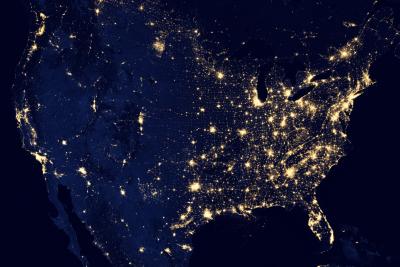Diverging Electricity Demand Scenarios Highlight Socioeconomic Impact Timing
In the field of electricity demand forecasting, a big challenge is predicting how future demand will change due to factors like population growth, economic change, and climate. Our research finds that the most immediate impact on electricity demand comes from different assumptions about socioeconomic factors, like population growth, which start to matter within the next 10 years. Differences in future climate projections become significant in 25-30 years, while differences between the climate models used only matter after 50 years. This finding helps the power sector plan better by clarifying the most pressing uncertainties in the near versus long term.
This research helps us understand when different future electricity needs in the U.S. start to differ based on various factors. We find that changes in population and economy affect electricity demand almost immediately, within the next 10 years. Our innovative approach uses a wide range of future scenarios to predict electricity needs. This helps other scientists and planners make better decisions about energy resources and investments. The findings also highlight the importance of bringing together fields like climate science and economics to understand future energy demands.
In our research, we investigate the divergence of projected electricity demand in the United States under various scenarios, focusing on socioeconomic and climate uncertainties. As part of the Integrated Multisector Multiscale Modeling (IM3) project, we explore eight scenarios that combine two socioeconomic pathways (SSP3 and SSP5) with two future climate trajectories (RCP 4.5 and RCP 8.5). Each climate future has two warming levels to account for climate model uncertainty. Our analysis reveals that socioeconomic factors, such as population growth, have an immediate impact on electricity demand, causing divergence within the next decade. In contrast, the effects of climate become significant within 25 to 30 years, while climate model uncertainties only become relevant after 50 years.
This study underscores the critical importance of incorporating socioeconomic scenarios into electricity demand projections for long-term planning. By identifying when these scenarios begin to diverge, we provide valuable insights for the power sector, aiding in resource adequacy and investment planning. Our findings suggest that planners should prioritize socioeconomic scenarios in their near-term analyses, while climate modeling and other uncertainties should be considered for mid- to long-term strategies. This research is crucial for ensuring a resilient and adaptable energy infrastructure.

